#birdyear
Text
EVERYBODY HAIL THE EMPEROR



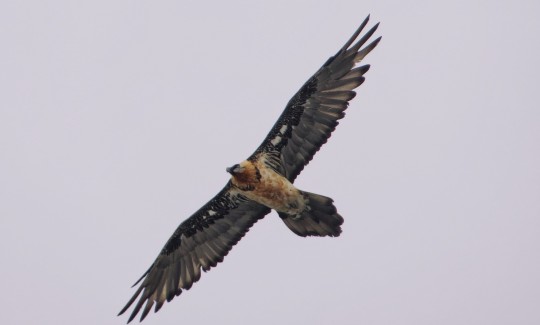

Lammergeier - Stilfser Joch
Gipeto - Passo dello Stelvio
184 notes
·
View notes
Text
Permittee Spotlight: The Heron That Ate Spiderman
Wildlife rehabilitators don’t know what will come through their doors. Sometimes, just another day on the job seems more like something from the pages of a comic book. Through their specialized skill, thorough care, and permits issued under the Migratory Bird Treaty Act, rehabilitators continue to support bird conservation into the Treaty’s next century.
The following gives a bird’s eye view of the kind of outstanding work done by our Permittee partners,

A Great Blue Heron cared for at Wolf Hollow Wildlife Rehab Center
When this Great Blue Heron arrived at Wolf Hollow Wildlife Rehab Center in Friday Harbor, Washington, it was very thin and weak, but no wounds or injuries were found. The staff was puzzled. The bird was also seriously dehydrated, so rehabilitators tube-fed it fluids and left it to rest.
When staff checked on the heron a couple hours later, they found a red gelatinous blob on the bedding. Concerned that it might be blood, they were in for a surprise.
“When we took a closer look we discovered a soft, red, plastic Spiderman toy.” said Penny Harner, a licensed rehabilitator at Wolf Hollow. “We presume the heron saw the toy on the shore, and, thinking it was something edible, swallowed it down.”

Rehabilitators found this Spiderman toy after giving the heron fluids.
Of course the heron couldn’t digest the plastic, so it was stuck in its digestive system, preventing it eating any other food. The heron was slowly starving.
Luckily, the fluids enabled the heron to regurgitate the toy and soon it was able to eat again. It took another five weeks for the heron to recover and gain weight before it was released back into the wild.
In the Pacific region, the Service partners with Permittees who work tirelessly to help birds and educate people about their importance. Wolf Hollow Wildlife Rehab Center and all other Permittee’s featured in our “Permittee Spotlight” series have been issued one or more Federal permits by the Service. They are federally permitted professionals. It requires unique skills and more knowledge than most people realize.
We ask that readers contact a permitted professional if they find birds or other wildlife needing care.
Learn more about our Permittee Spotlight series here.
Photos provided by Wolf Hollow Wildlife Rehab Center.
#USFWS#USFWS Pacific Region#birds#wildlife#birdyear#GBH#heron#Spiderman#comics#conservation#centennial
0 notes
Text
On the Move: Spring Migration
Imagine you are a young bird, hatched during the summer. Though, you are only a few months old, and you have to migrate south for the winter—maybe 100’s or 1000’s of miles. Then you must adapt to that winter habitat. In the spring, you must migrate back to where you were hatched!
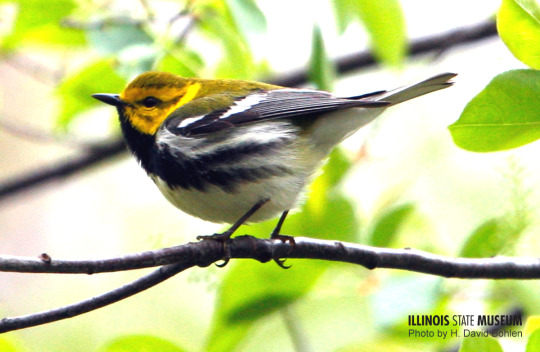
(Black-throated Green Warbler (male), winters in Central America & northern South America, photo taken in Washington Park, May 3, 2008)
Migrating to warmer areas in the fall is one of the main strategies that birds, especially insectivores, use to survive the winter. Migration might be innate (genetically controlled), but each bird still has to brave the dangers of a long flight to its winter quarters.
Some birds make very long flights such as the Arctic Tern which breeds in the Arctic and flies to its winter area in Antarctic waters. Others like the Fox Sparrow migrate, but mostly stay in the US and Canada. The photos here are just a few examples migrants that make their way through Illinois each spring and fall.

(Fox Sparrow, photo taken on Marsh Road, November 2012)
Each species has evolved its own migration patterns and winter quarters. Many birds migrate at night and use the moon and stars as cues for orientation, but others migrate during the day such as hawks and swallows. Besides dealing with natural dangers such as bad weather (which can exact heavy casualties) and predators, birds also have to navigate humans obstructions and dangers including:
Tall buildings and TV transmitting towers;
Large reflecting windows that cause disorientation;
Speeding cars, trucks and trains;
Maurading cats and dogs; and
Agricultural seeds and sprays containing neonicotin (a single seed coated with neonicotinoid is enough to kill a songbird).
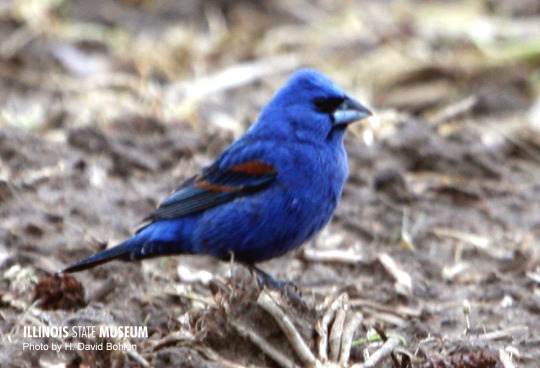
(Blue Grosbeak, winters from Mexico to Panama, photo taken in Buckhart, May 2, 2008)
These threats kill millions of birds each year. However, habitat destruction is the worst enemy, because birds it leaves birds without a place to live and nest to replenish their numbers.
This spring (2016) birds are also contending with unusually warm temperatures which have caused vegetation to grow almost a month ahead of schedule. Does this cause the migrant birds to be out of sync with their food resources? Ornithologists are observing birds to find out.
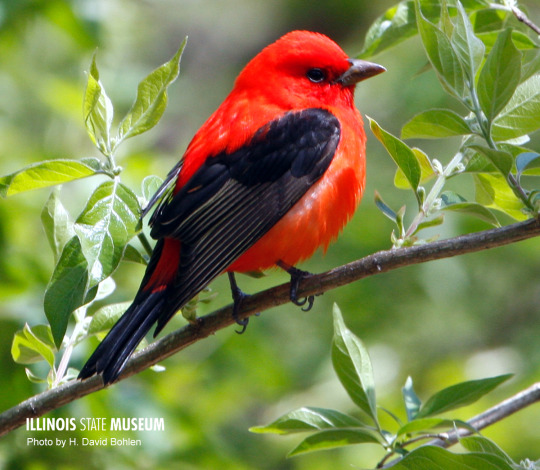
(Scarlet Tanager (male), winters from Panama to Bolivia, photo taken in Washington Park, April 28, 2008)
What can you do to help? There are many ways in which humans can help migratory birds. Here are just a few:
Put up window clings to help birds avoid flying into the glass.
Provide feeders with a variety of foods.
Plant native plants that provide food and shelter for birds.
Keep cats indoors.
Never disturb nesting birds (all migratory birds are federally protected).

(Baltimore Oriole (male), winters from Mexico to northern South America, photo taken in Lincoln Memorial Gardens, May 1, 2008)
2016 marks the 100th anniversary of the signing of the Migratory Bird Treaty which began international efforts to protect migratory birds in North America. You can learn more here. You can learn more about the history of the birds of Sangamon County here.
0 notes
Text
Oggi ho visto lui, il signor Gufo di Palude

Prima volta nella vita. Mi è passato sopra la testa in pieno paese, a portata di fotocamera di cellulare. Ovviamente ho avuto i riflessi di una cozza sullo scoglio e quindi niente foto.
Ma tanto queste son più belle.


#asio flammeus#owls#photo is not mine#short-eared owl#strigiformes#strigidae#birds#birds of prey#birdwatcher#birder#birdwatchin#ornitologia#birdyear
4 notes
·
View notes
Text

A really far and lofi tenebrous pheasant aka an highly melanic variant of the common pheasant - Lecco, Italy 10/02/21
1 note
·
View note
Text
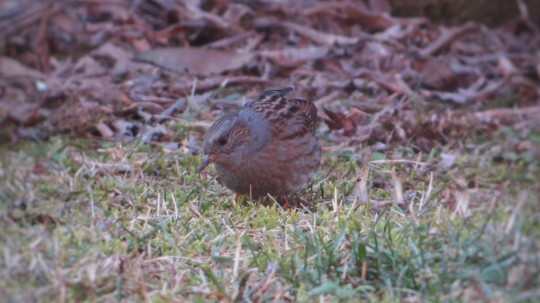

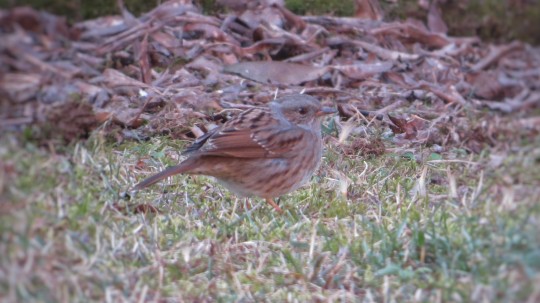
Dunnock/Passera scopaiola (Prunella modularis) visiting my garden.
The species is a winter visitor here in the northern Po Valley.
1 note
·
View note
Text

First day since I built up the manger and already had the first visitors. Hope these Great Titmice won't bully other songbirds too much.
[Bread crumbles are not a good food for birds, I know it's not that nutritive. Gonna buy some seeds asap. Gonna do a fats and seed cake maybe]
#great titmouse#cinciallegra#parus major#birds#birdwatcher#birder#birding#birdwatching#birdyear#bird manger
1 note
·
View note
Text
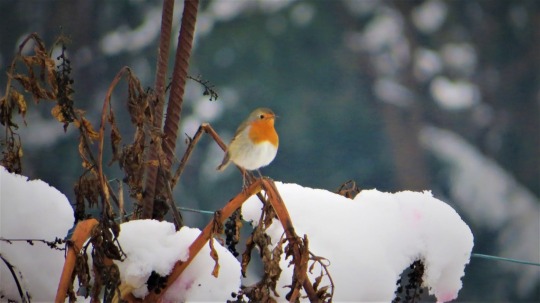


The winter trio:
Robin (Erithacus rubecula)
Serin (Serinus serinus)
Chaffinch (Fringilla coelebs)
1 note
·
View note
Text

Find the owl.
Long-eared owl (Asio otus) - Western Lombardia, Italy. 22/02/21
0 notes
Text
Berta's Top 10 Birding Tips
1) Get up early: birds and other wildlife are more active in the morning

2) Get out late: Dusk can be a great time to see birds during the warmer times of year since many get active to grab one last snack before they hunker down for the night. In the winter, however many birds fly to their roosts before dusk so become much less active during the hour before sunset. Evenings are always good for species like owls who are just getting up for a night of hunting. During the winter, it may take the birds a little while to warm up, so whereas noon in the summer would be a slow time, lunch time in the winter might be just in time!

Photo credit: Common Loon, Joe Sands #USFWS
3) Get the right light. Stand between the sun and the bird. Keeping the sun behind you gives you the best light to see the colors and features of a bird. It also helps camouflage you. If the bird has to look at you, it's looking into the sun, and may not even know that you are there.
4) Get quiet!: Have a no-chatting policy. Talking while walking, shuffling your feet and even wearing clothes that swish while you walk will give wildlife a heads up that you are coming, and they will politely move out of your way. That's no fun! If you want to discuss a bird you see, stand close and talk quietly. If this is your only social time, try timing yourself for five minutes of silent birding time. See how many more birds you'll see!
5) Go slow : Fast movements may scare birds away
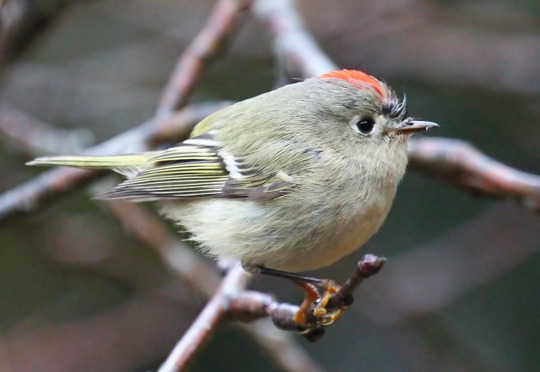
Photo credit: Ruby crowned Kinglet John Flannery, C.C.
6) Just relax : Try just sitting for a while. Animals that might have been scared out of your path move back into the picture within a few minutes. A sitting human is less of a threat than a moving human.
7) Bring your binos. Binoculars are a critical piece of equipment for birding by sight. You can see close up without getting too close for comfort. Sometimes birds that look very small and plain at a distance pop with color and detail once you put your binos up. But don't whip them up to your face, giving yourself whiplash and scaring the bird half to to death. Bring them up to your eyes slowly and smoothly.
A spotting scope can be a useful tool while birding. They can be spendy and heavy but are definitely worth it if you are out to see shorebirds because they are small, fast and subtle. For most birding, though, binoculars are the perfect tool.
8) Bring your ears! One of the best ways to identify a bird is through its call or songs. After a while, many birders can recognize a bird using a single call note and don't even have to look at the bird to identify it. Try downloading birding apps made by Sibley, iBird, National Geographic, and others, that include bird vocalizations (see reviews at: https://www.audubon.org/news/the-best-birding-apps-and-field-guides). Most of them include bird calls that you can plan after you get back home, and get to know their voice that way. Don't play calls in the field. It can be very disruptive for birds who are trying to defend their territories by singing and calling. This causes them to waste energy trying to chase YOU away!
9) Have Fun. It's not a contest but you can make it one if you want to. If you are feeling mellow, just enjoy the sounds of the birds in the trees and watch their behavior. When they eat, do they pull caterpillars from a crack in the bark, or do they wrestle a nut out of a pine cone? If you are feeling competitive, try to name before your friend does, or secretly keep a list to compare at the end of the walk. It doesn't matter how you do it. Nobody's watching. Just enjoy yourself!
10) Get out with other birders/bring friends- birding with other people is a great way to speed up your learning curve. Audubon Society trips are a great start. There are local chapters in most areas http://audubonportland.org/. You can learn a lot by participating in local online birding groups, listservs or facebook groups to help you learn where different species can be found and network with other birders.
Learn more about the Migratory Bird Centennial: Celebrating 100 years of Migratory Bird Conservation http://www.fws.gov/birds/MBTreaty100/index.php
8 notes
·
View notes